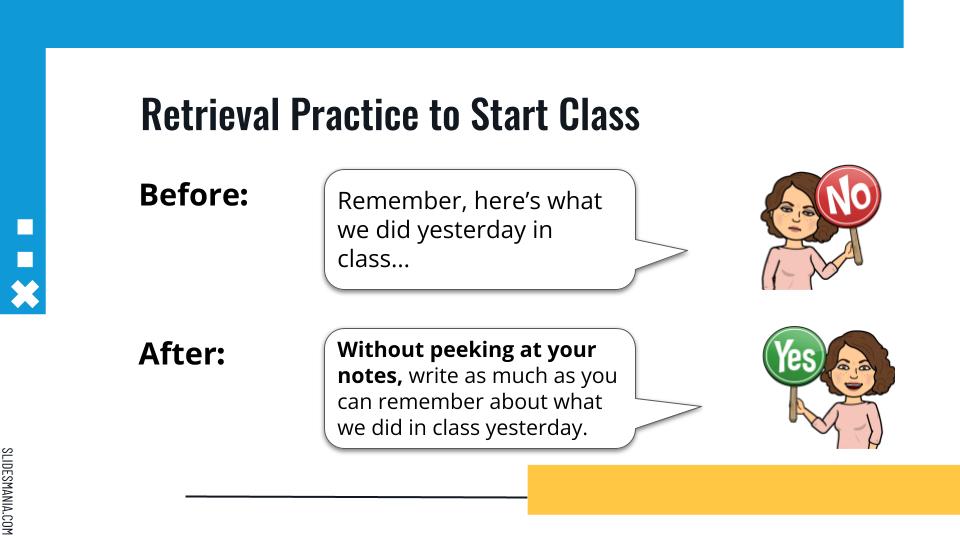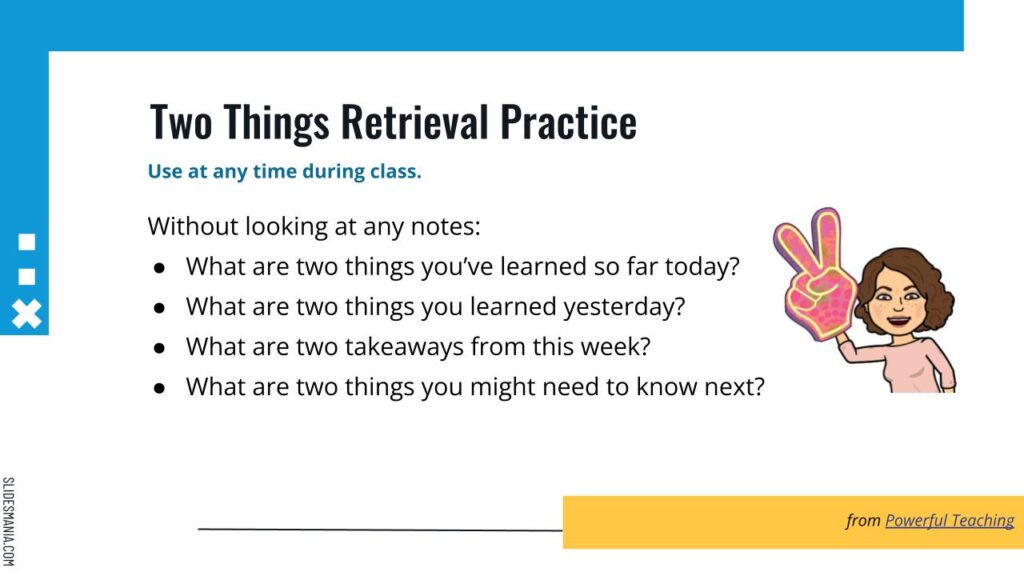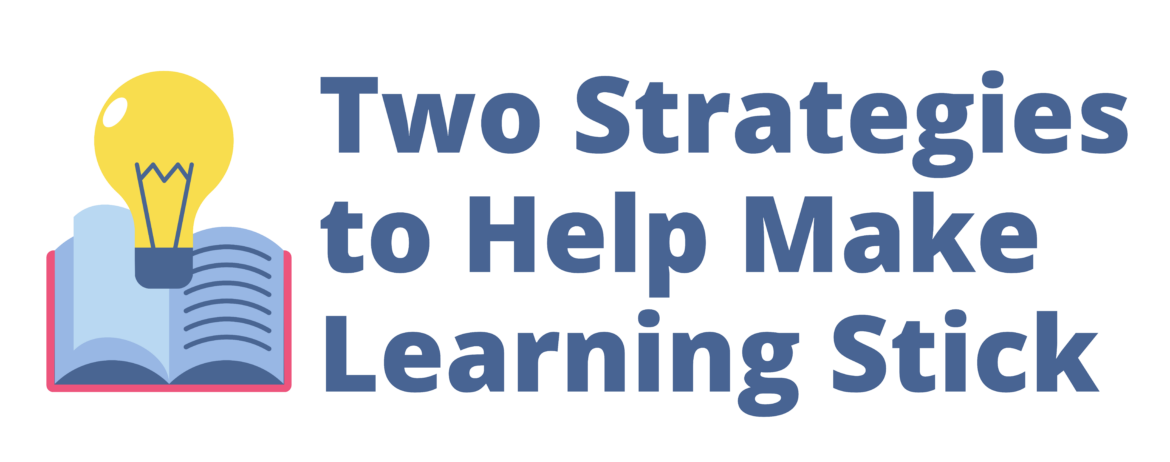Teacher confession time: I was doing it wrong! I didn’t realize how I asked questions in my classroom impacted the “stickiness” of learning. Furthermore, I didn’t realize there were quick, easy retrieval practice strategies that I could teach my students to help make learning stick.
So let’s try it. Think back and try to remember what you had for lunch last Tuesday. Seriously! Stop reading and try it. Did your eyes close? Or did you raise an eyebrow or scrunch up your nose? Unless Tuesday was a special occasion, or unless you have the same lunch every Tuesday, my guess is that it took a bit of thinking to remember your lunch from last Tuesday. But that’s a good thing, and that’s exactly the feeling we want our students to experience to help make the learning stick.
What is Retrieval Practice?
Retrieval practice is a learning strategy where you bring information to the front of your mind; you pull information out of your head.
I invite you to introduce the idea of retrieval practice to your students and emphasize the importance of desirable difficulty– just like you felt when trying to remember Tuesday’s lunch. Even though it’s often an uncomfortable feeling, the challenge of pulling information to mind is what improves the retention of the learning. This post from retrievalpractice.org includes slides of fun warm-up questions for students to practice that “memory feeling” and make retrieval no big deal.
Takeaway #1: Starting Class with Retrieval Practice
Now take a minute to reflect. How much time is spent putting information into students’ heads in your classroom? Next, consider how much time students spend pulling information from their brains?
Here was the reason for my teacher’s confession earlier: I typically started class by reminding students of everything we did yesterday (or last week or in the unit.) “Good morning! Remember yesterday we found ways to solve quadratic equations by graphing, and you first …” I crammed all of that information into students’ heads, so I missed an opportunity for retrieval practice. Instead, I could have started class by creating a routine of asking students to write as much as they could remember about what we did in class yesterday without looking at their notes.
The key part is for students to understand the importance of creating desirable difficulty, so including “Without peeking at your notes” is an important phrase in the instructions.

Takeaway #2: Make Retrieval Practice a Routine
To make retrieval practice a regular part of a classroom routine, authors Pooja Agarwal and Patrice Bain suggest the strategy of “Two Things,” which may be used at any point in the lesson. Once students realize the importance of pulling information to mind and embracing desirable difficulty, they will understand that these quick processing practices can help the learning stick.

Students might jot their responses on a scratch piece of paper, in their notes, on a Google Doc, or using your LMS or another digital tool.
Suggested questions include the following, but the possibilities are endless.
- What are two things you’ve learned so far today?
- What are two things you learned yesterday?
- What are two takeaways from this week?
- What are two things you might need to know next?
I now realize that by simply tweaking my questions to include opportunities for retrieval, retention can be improved.
Try it Out!
Let’s end by trying the Two Things Strategy. Seriously, try it! Choose one of the prompts, and without scrolling up, retrieve and respond.
- The two key terms were desirable difficulty and retrieval practice. How would you define these terms?
- What were the two takeaways from this post?
- Name two of the questions in the Two Things Retrieval Practice list.
- What are two ideas from this post that you plan to apply to your own work?
After retrieving the answers to these questions, return to the post to check your answers. If you want to discuss your ideas for using retrieval practice, please share in the comments!
Want to know more?
- In this short video, Dr. Pooja Agarawal shares Three Ways Which Retrieval Boosts Learning.
- Here’s a playlist of some of the podcasts that informed Kathryn’s understanding of the Learning Sciences.
- Retrieval Practice resources from The Learning Scientists include downloadable materials.
- In this Digital Learning Radio podcast episode, Kathryn shares the book Stop Talking, Start Influencing.
- Read Kathryn’s first blog post about Retrieval Practice.
Recommended Reading
- Powerful Teaching
- Stop Talking, Start Influencing: 12 Insights From Brain Science to Make Your Message Stick

